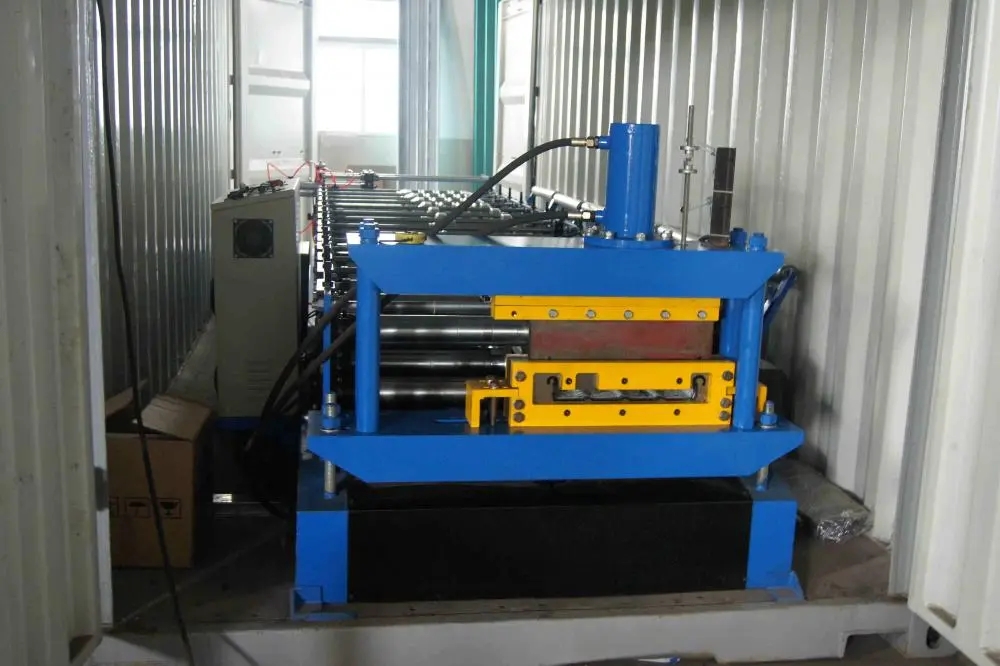
The Evolution and Impact of Corrugated Metal Machines
In the world of modern manufacturing, few innovations have had as significant an impact on industrial processes as corrugated metal machines. These machines are the backbone of the corrugated metal industry, facilitating the production of strong, lightweight panels that are used in a myriad of applications, ranging from roofing and siding to packaging and transportation. Understanding the evolution, functionality, and impact of these machines provides insight into their integral role in both industry and society.
The Historical Context
The journey of corrugated metal manufacturing began in the early 19th century. Initially, corrugation was developed as a method to enhance the structural integrity of paper, with corrugated cardboard being widely adopted for packaging. However, it wasn’t long before manufacturers realized that similar principles could be applied to metal. Early metal forming techniques involved manual processes that were labor-intensive and time-consuming. The transition to mechanized production marked a significant turning point.
By the early 20th century, advancements in machinery, metallurgy, and technology paved the way for the development of specialized corrugated metal machines. These machines brought efficiency and precision to the production process, allowing for uniform corrugation that significantly improved the strength-to-weight ratio of metal sheets. This innovation transformed how metal was utilized in construction and manufacturing.
The Functionality of Corrugated Metal Machines
Corrugated metal machines operate based on a straightforward principle they take flat metal sheets and create a series of parallel ridges and grooves. This corrugation process enhances the material’s stiffness, distributing loads more evenly and providing greater durability. The machines can accommodate various materials, including steel, aluminum, and galvanized sheets, making them versatile for different applications.
Typically, these machines consist of several key components feed mechanisms, forming rolls, cutting tools, and stacking systems. The operation begins with loading raw metal sheets into the machine, which then feeds the sheets through a series of rollers that shape them into the desired corrugated profile. Advanced models are equipped with computer numerical control (CNC) systems, allowing for precise adjustments and customization to meet specific requirements.

The output of corrugated metal machines varies widely, from roofing panels that withstand harsh weather conditions to decorative metal siding that enhances aesthetic appeal
. Additionally, industries such as automotive and aerospace utilize corrugated metals for lightweight structural components, underscoring the machines' versatility.Economic and Environmental Impacts
The economic implications of corrugated metal machines are substantial. They have streamlined production processes, reducing labor costs and increasing output while maintaining high-quality standards. The construction industry, in particular, benefits from the rapid manufacturing capabilities these machines provide, allowing for faster project completions and reduced material waste.
Environmentally, corrugated metals are increasingly recognized for their sustainability. Many manufacturers use recycled materials in metal production, contributing to a circular economy. Moreover, the longevity and durability of corrugated metal products mean that they require less frequent replacement, minimizing their overall environmental footprint. The increased emphasis on green building practices has further boosted the demand for corrugated metal solutions.
Future Trends in Corrugated Metal Machinery
As technology continues to evolve, the future of corrugated metal machines looks promising. Innovations such as automation, artificial intelligence, and improved materials are set to redefine the industry. For instance, smart machines equipped with sensors can monitor production processes in real time, enabling manufacturers to make immediate adjustments that optimize efficiency and reduce waste.
Additionally, the demand for custom metal solutions is expected to grow, leading to more advanced machine capabilities. Businesses are increasingly seeking unique designs that cater to specific architectural needs, which will further drive innovation in machine technology.
In conclusion, corrugated metal machines have revolutionized the way metal is processed and utilized across various industries. From their humble beginnings in the 19th century to their current state-of-the-art iterations, these machines play a pivotal role in enhancing both economic efficiency and environmental sustainability. As we look to the future, continued advancements in technology promise to further enhance the capabilities of corrugated metal machines, ensuring their place as indispensable tools in modern manufacturing.